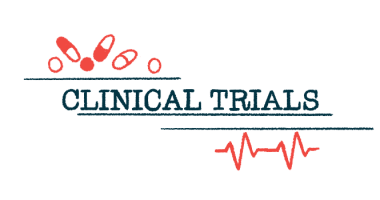Takhzyro linked to long-term quality of life gains in HAE study
Reductions in swelling attacks seen over 2.5 years in HELP OLE

Long-term treatment with Takhzyro (lanadelumab) was associated with quality of life gains among people with hereditary angioedema (HAE) who participated in the HELP open-label long-term extension (OLE) study.
The study’s participants, who either rolled over from the Phase 3 HELP trial (NCT02586805), or were newly enrolled in HELP OLE (NCT02741596), also reported that their disease was well-controlled and said they were satisfied with their treatment.
Takhzyro, an approved preventive (prophylactic) treatment for HAE patients from Takeda, has a proven track record of reducing the rate of HAE swelling attacks. Now, as noted by the investigators, the “significant reductions in attack rates were accompanied by marked, sustained reduction in disease burden.”
Altogether, these results support the “benefits of [Takhzyro] therapy associated with attack prevention,” the team wrote.
The findings were reported in “Long-term lanadelumab treatment improves health-related quality of life in patients with hereditary angioedema,” a study published in the journal Annals of Allergy, Asthma & Immunology.
Takhzyro is an antibody-based therapy that works by inhibiting kallikrein, a protein that controls the production of bradykinin — the signaling molecule that drives HAE swelling attacks. It’s given as an under-the-skin (subcutaneous) injection every two weeks, or in some select cases, every four weeks.
Its approval as an HAE preventive treatment was backed by data from the Phase 3 HELP trial, which evaluated three dosing regimens of Takhzyro against a placebo in 125 HAE patients, ages 12 and older.
Results indicated that Takhzyro significantly reduced the rate of monthly swelling attack when given at its now approved dose (300 mg every two weeks). In fact, the therapy lowered attack rates by 87% after six months compared with placebo.
Takhzyro also led to clinically meaningful improvements in quality of life, as assessed by the Angioedema Quality of Life Questionnaire (AE-QoL). The greatest gains again were observed at the now approved dose.
After the main trial, 109 participants rolled over into HELP OLE, in which all received Takhzyro (300 mg every two weeks) for an additional 2.5 years. HELP OLE also involved 103 newly-enrolled HAE patients not rolling over from a previous study.
Reductions in swelling attack rates observed in the main trial were maintained for up to about 2.5 years with treatment in the OLE.
Now, researchers analyzed quality of life and other patient-reported outcomes from HELP OLE.
For rollover participants from HELP, AE-QoL scores were reduced by 10.2 points from HELP OLE’s start (baseline) to about 2.5 years later, representing an improvement in life quality. That improvement was largely driven by participants who had been on a placebo in the main HELP trial, who saw a nearly 22-point improvement in their scores.
Still, participants given Takhzyro in HELP also continued to see gains in the OLE. From the start of HELP to the end of HELP OLE — up to about three years of treatment — these participants saw an average 25.1-point improvement.
A total of 44 of 90 rollover participants — just less than half — who completed the HELP OLE experienced an improvement that was considered clinically meaningful.
Participants newly enrolled in HELP OLE, or non-rollovers, also experienced a 19.5-point improvement in total AE-QoL scores.
For non-rollover participants and those who received placebo in HELP, the greatest gains were seen in the functioning life quality domain. Meanwhile, rollover participants given Takhzyro in the main trial saw the greatest gains in the fear/shame domain.
This is the longest follow-up of patients in a published study of [long-term prophylaxis] for HAE.
Improvements in life quality were observed regardless of patients’ baseline attack rates, or those at the study’s start, and their previous use of preventive therapies.
The angioedema control test (AECT) — a patient-reported measure of disease control — was administered after one year of treatment in the OLE.
At that time, 87.4% of rollovers and 95.7% of non-rollovers had a score of at least 10, reflecting a feeling that their HAE was well-controlled. About half of the patients in each group had a maximum score of 16.
Those rates were generally sustained throughout the remainder of the study. Patients who reported well-controlled disease also tended to report better life quality.
An increase in work productivity also was reported with treatment, with work impairments or missed work time decreasing from the start to the end of the HELP OLE.
“Patients considered their disease to be controlled, reported increased productivity, and were satisfied with [Takhzyro] treatment and found it to be convenient,” the researchers wrote, noting that this was “despite non-invasive dosage forms usually being preferred over injections.”
A total of 78.7% of participants and 82.4% of investigators rated treatment responses as excellent.
Measures of depression and anxiety, as well as other indicators of health status were generally normal at the study’s start and remained either unchanged or slightly improved with treatment.
Researchers noted that the large number of study participants and long treatment period were major study strengths, writing that “this is the longest follow-up of patients in a published study of [long-term prophylaxis] for HAE.”







